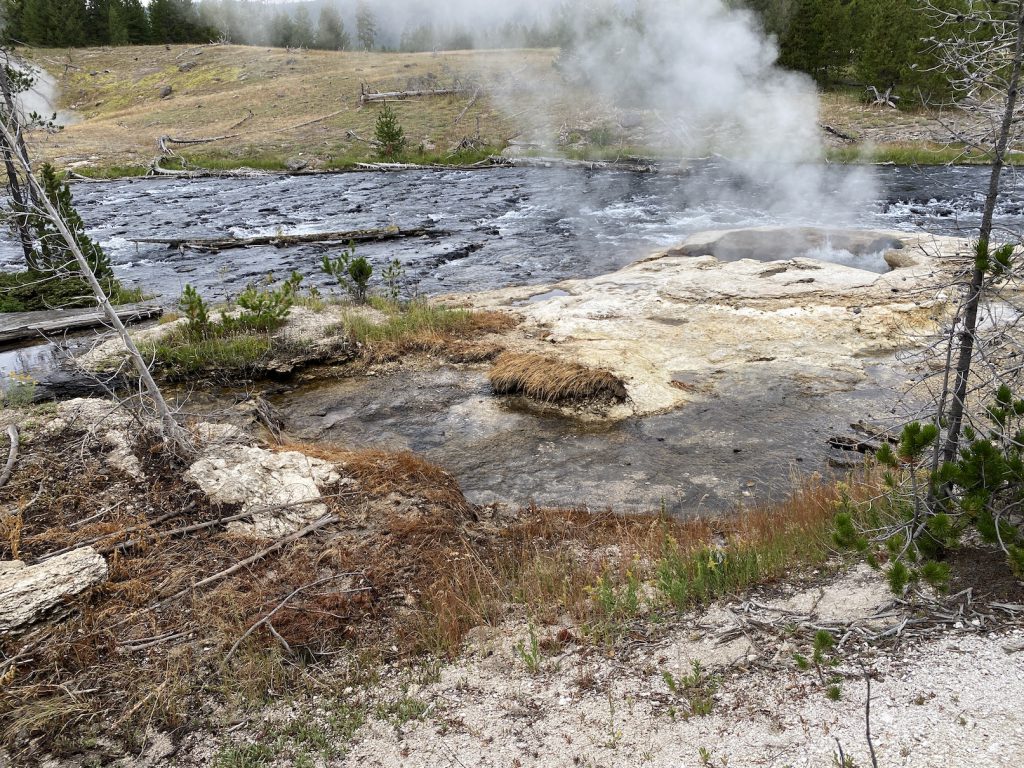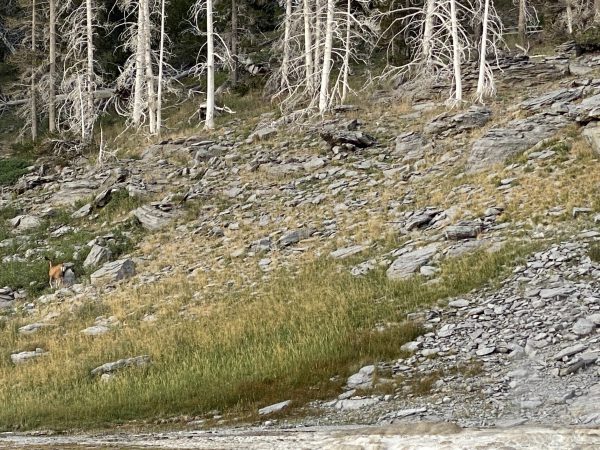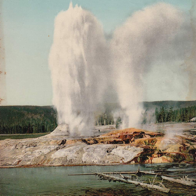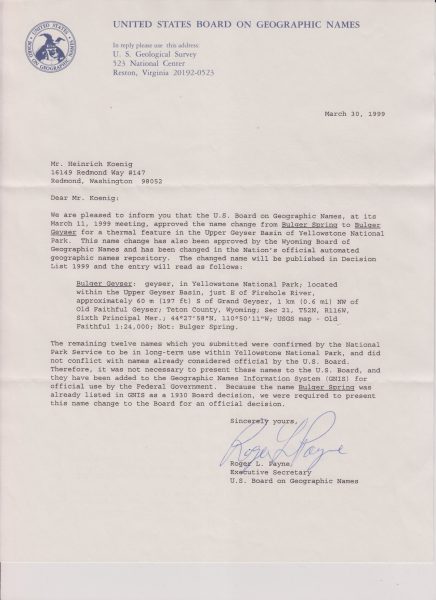Got a late start to the day. After Grand erupted at sunrise, there was nothing much going on, other than it was raining. So it was nearly 11:00, and time for the next Grand, before heading out.
It was early, but Grand cooperated with a short interval. And it cooperated with a short first burst and the first Turban initiated eruption I've seen this trip. At a little over 8 minutes, we had to get a second burst. Then again, it took 1m24s for the second burst to start, which is way on the long side for a pause duration. Then, of course, the second burst had to last over two minutes, insuring that we would not get a third burst.
During Grand, West Triplet started, which is also a bit different from what I've seen so far this trip.
Since it was an overcast, cool day, decided that it would be a good time to spend a little time in the Bijou monkey cage. Spent about an hour and a half, and didn't see much. Bijou was slowing down every six to eight minutes, and that was about it.
I was considering leaving, but I finally left when another event started at Fan & Mortar. Unlike the other ones we've seen the past few days, this looked and felt like a real event. Main Vent was putting out huge splashes, and when the Fan vents started, they were strong. And Angle took its time in finally joining in.
For the better part of 15 minutes the activity built up. The Fan vents would get weaker on occasion, but High never really stopped, and each resurgence seemed a bit stronger, with more water pouring out that the prevent surge cycle. Finally, from my vantage point over by Spiteful, I could see steam pouring out of Main Vent and even the East Vent. But it still took over another minute to build into the major eruption.
I's been almost three years since I last saw Fan & Mortar erupt, but this seemed stronger than most that I've seen recently. The water from Main vent landed well beyond the walkway on several occasions, and the vertical play also seemed taller. I can't say much about Mortar, as I was not in position to see it, and it was so steam later that it was still hard to see it.
Up to this point, the day had been nice. Despite the overcast, the sun was getting through enough that at Bijou I was feeling a bit warm. At some point during the Fan & Mortar eruption, though, the wind shifted, it got cooler and worst of all, suddenly it was smoky. I noticed this especially riding the bike back. Was wondering if it was something new that started nearby by the morning's thunderstorm. It sounds like it's from something in Idaho.
During the Fan & Mortar eruption, a bear was sighted along the trail to Solitary. This caused The Bear Patrol to search the area, but the bear had wisely left the area. Still, I think I will be careful out at Grand at odd hours.
It was time for Grand, so went out there in much cooler and smokier conditions. After a couple of Turban eruptions, we got one whose interval almost qualified as a Delay. It was a strong Turban eruptions, and a long one. It was followed on the next interval by a Turban eruption without any Grand overflow. It was at that point that the rain started. Hoped that we could get the eruption on the next Turban eruption, in effect having a two Turban eruption delay. But instead Turban erupted after only 17 minutes. But it was the next interval that gave us the Grand eruption. A One Burst Eruption lasting about 10-1/2 minutes.
For once, the rain let up, instead of intensified, when we got on the bikes at Castle. We probably should have waited a little bit, as about fifteen minutes later, it had all stopped.




